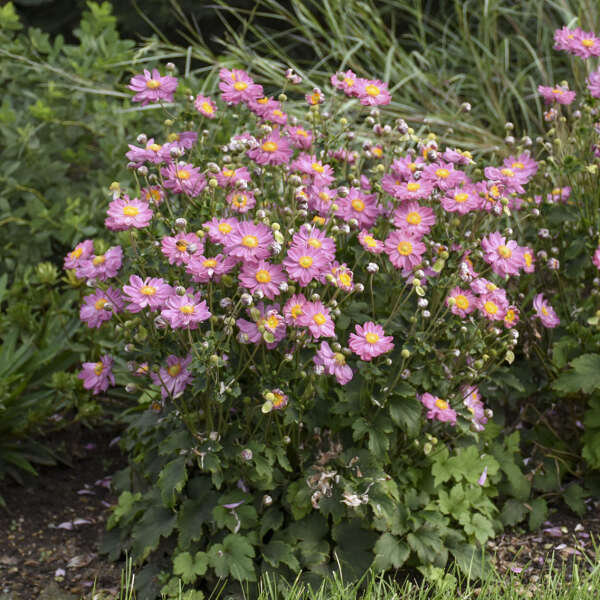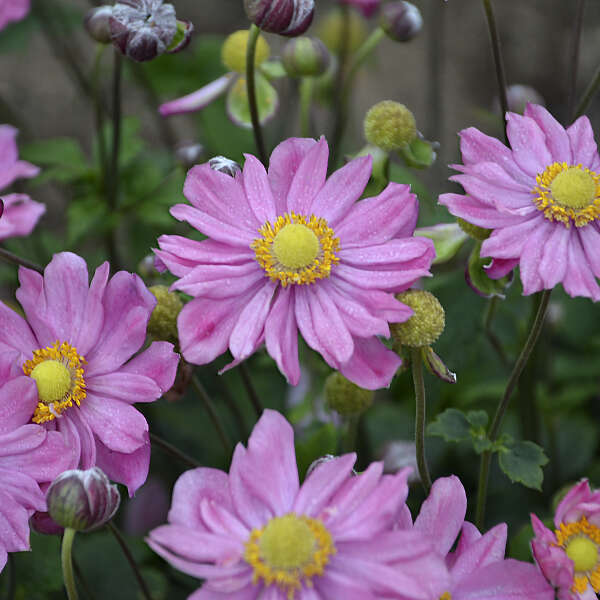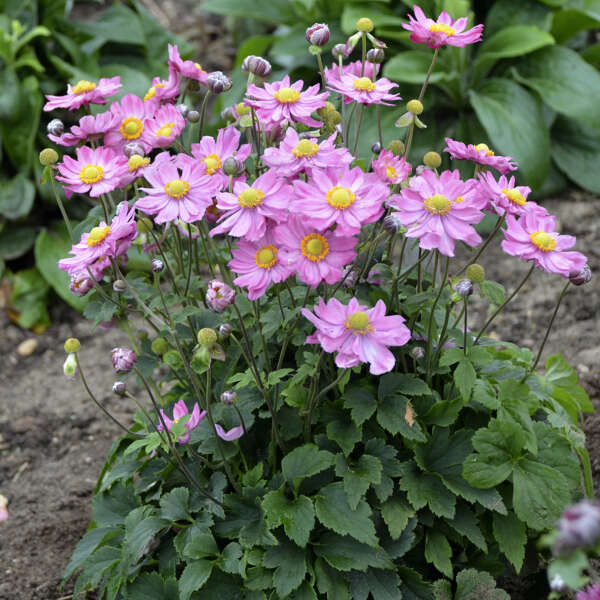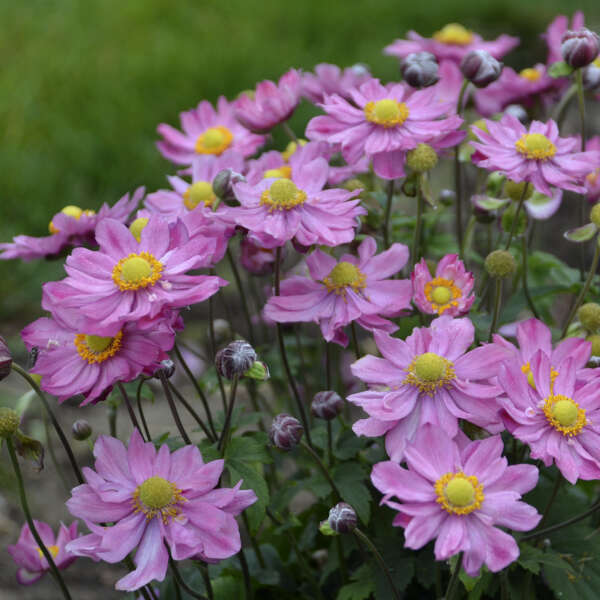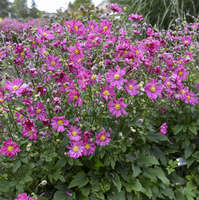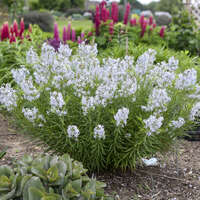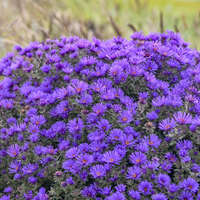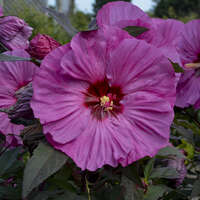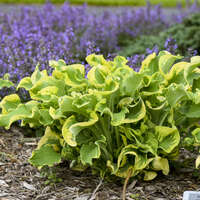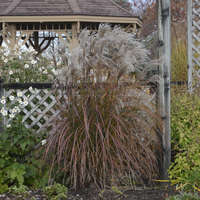Anemone 'Curtain Call Pink' PP30739
Curtain Call Series
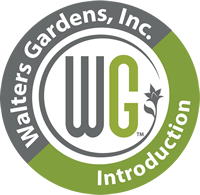
Common Name: Japanese Anemone
This fall blooming Anemone is one of the final performers in your garden for the growing season. Beginning in late summer, this perennial produces bright rose pink flowers that are positioned right above a small mound of green foliage. The flowers are fuller than single, producing a double row of petals. Its shorter stature lends itself well to containers, both as monoculture and in combination with other perennials. It spreads by underground rhizomes. This is a perfect companion to other fall interest varieties, such as Coneflowers, Ornamental Grasses, and Stonecrop.
A staple item for late summer and fall borders, Japanese Anenomes are graceful plants with beautiful, satiny flowers borne on tall stems above a clump of shorter basal foliage. Watching them sway in the breeze brings a feeling of calm and peace to the garden. Since they are a bit late to rise in the spring, they make an ideal cover for the dying foliage of spring bulbs.
30ct Plug Tray |
72ct Plug Tray |
